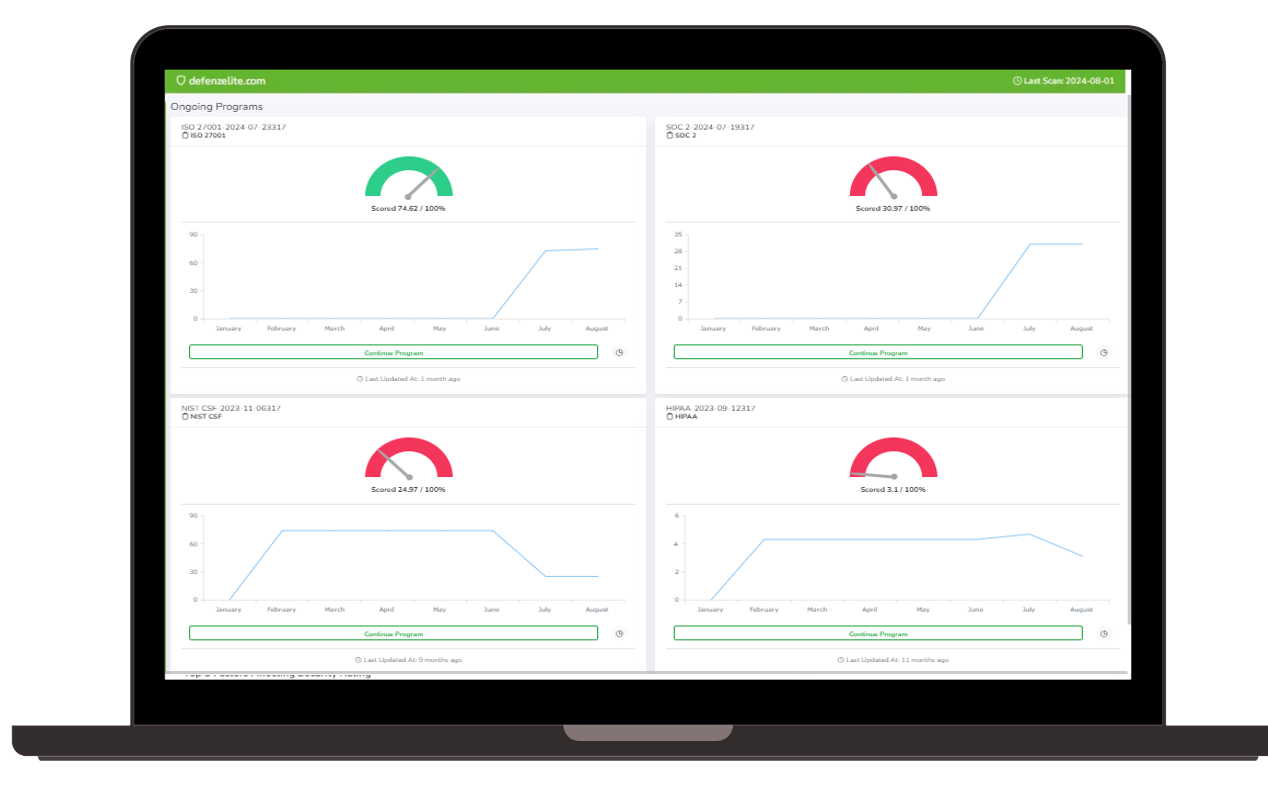A Comprehensive Guide to Top GRC and ERM Software Vendors
Managing governance, risk, and compliance (GRC) is crucial for maintaining organizational health and resilience. With numerous GRC tools available, selecting the right software can be overwhelming. In this blog, we will explore what GRC entails, compare top GRC vendors, and discuss the significance of GRC for various industries.
What Is Governance, Risk, and Compliance?
Governance, Risk, and Compliance (GRC) refers to a unified approach to managing an organization's governance, risk management, and compliance with regulations.
- Governance involves the frameworks and processes that ensure an organization’s operations are conducted ethically and in line with its strategic objectives.
- Risk Management focuses on identifying, assessing, and mitigating risks that could affect the organization's performance and stability.
- Compliance ensures adherence to laws, regulations, and internal policies to avoid legal penalties and operational disruptions.
GRC integrates these elements into a cohesive strategy, helping organizations navigate complex regulatory environments and manage potential threats effectively.
Top GRC Tools & Software
With a variety of GRC tools available, it's essential to choose one that aligns with your organizational needs. Here’s a comparison of some of the top GRC vendors:
Risk Cognizance
- Features: Proactive monitoring, advanced threat detection, and comprehensive reporting.
- Benefits: Known for its scalability and extensive integration capabilities, making it suitable for large enterprises. Provides a highly customizable platform with strong reporting and analytical capabilities. Multitenant architecture supports subsidiaries, Managed Security Service Providers (MSSPs), and Managed Service Providers (MSPs). Integrates seamlessly with ServiceNow's ITSM platform, offering a unified approach to GRC and IT service management.
MetricStream
- Features: Risk management, compliance tracking, audit management, and policy management.
- Benefits: Known for its scalability and extensive integration capabilities, making it suitable for large enterprises.
RSA Archer
- Features: Enterprise risk management, compliance management, audit management, and IT risk management.
- Benefits: Provides a highly customizable platform with strong reporting and analytical capabilities.
ServiceNow GRC
- Features: Risk management, policy management, audit management, and automated workflows.
- Benefits: Integrates seamlessly with ServiceNow's ITSM platform, offering a unified approach to GRC and IT service management.
Diligent
- Features: Board governance, risk management, compliance management, and audit management.
- Benefits: Focuses on improving boardroom effectiveness and compliance through user-friendly interfaces and comprehensive analytics.
Why Is GRC Important for Businesses?
Implementing a GRC framework is vital for several reasons:
- Enhanced Decision-Making: GRC systems provide valuable insights and data-driven analysis, supporting better strategic and operational decisions.
- Risk Mitigation: By identifying and managing risks proactively, businesses can avoid potential disruptions and reduce their exposure to various threats.
- Regulatory Compliance: Ensures adherence to legal and regulatory requirements, reducing the risk of penalties and legal issues.
- Operational Efficiency: Streamlines processes and integrates various functions, leading to more efficient operations and resource utilization.
What Industries Typically Use GRC Software?
GRC software is utilized across various industries, each with its specific requirements and challenges
- Financial Services: Focuses on managing financial risks, regulatory compliance, and internal controls.
- Healthcare: Addresses compliance with health regulations, risk management related to patient data, and operational governance.
- Manufacturing: Manages compliance with industry standards, safety regulations, and supply chain risks.
- Government: Ensures adherence to public sector regulations, risk management, and internal auditing.
- Technology: Focuses on IT risk management, data security, and compliance with technology-related regulations.
Using GRC Software to Streamline Governance, Risk Management, and Compliance
GRC software plays a crucial role in optimizing governance, risk management, and compliance functions. Here’s how:
- Centralized Platform: GRC software provides a unified platform for managing governance, risk, and compliance activities, eliminating silos and ensuring consistency.
- Automation: Automates repetitive tasks such as risk assessments, compliance checks, and reporting, reducing manual effort and minimizing errors.
- Real-Time Monitoring: Offers real-time insights and alerts, enabling organizations to respond quickly to emerging risks and compliance issues.
- Enhanced Reporting: Facilitates comprehensive and customizable reporting, helping stakeholders make informed decisions and demonstrate compliance to regulators.
By leveraging GRC software, organizations can achieve a more integrated approach to managing their governance, risk, and compliance obligations, leading to improved efficiency, reduced risks, and better regulatory adherence.

